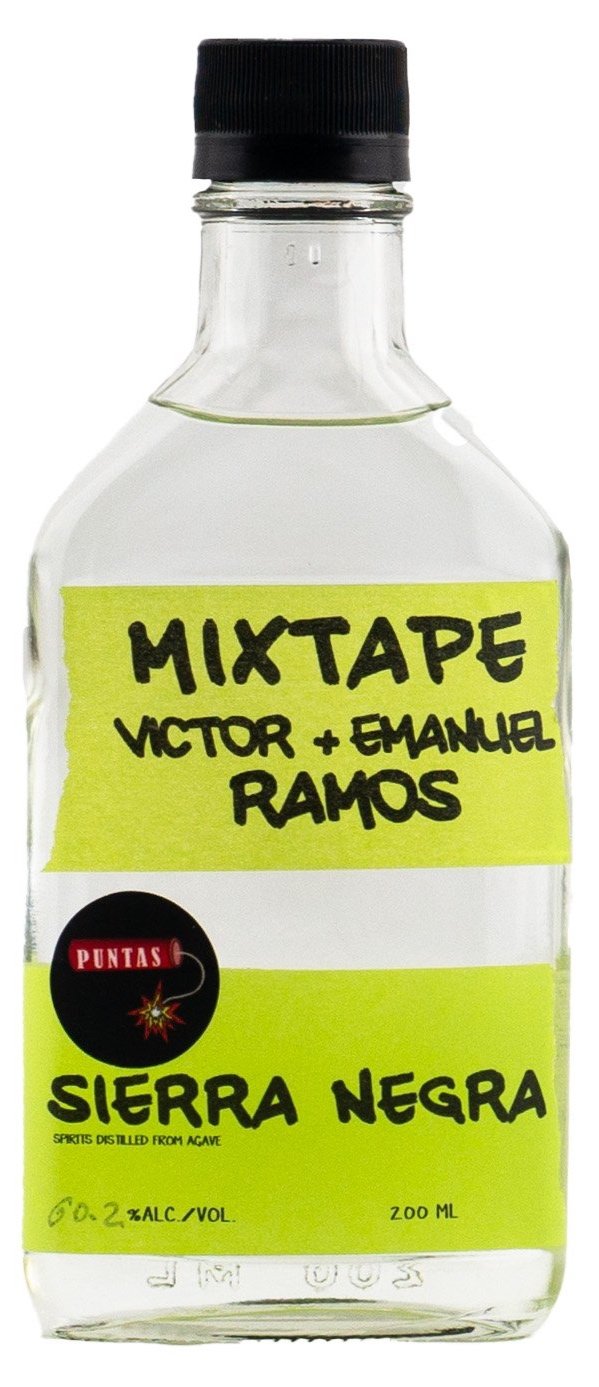Puntas de Sierra Negra
60.2%, August 2023
Victor Ramos, Mengolí de Morelos, Miahuatlán, Oax.
We already covered the basics on puntas back in Vol. 4. You can read them there if you’d like a primer on what that means.
After taking some time away from the Palenque to focus on his health, Don Victor is back doing what he does best – firing his stills hot and fast, and turning out batches of supremely excellent mezcal. While a bunch of these will make their way to the USA via Mal Bien next year, we thought it would be good to celebrate the return of our guy Victor F’n Ramos with a fresh batch of puntas from one of his favorite varietals.
Also, somehow we managed to release 10.5 volumes of Mixtape so far, and this is the first time something from Victor is making it in a box? How is that possible? Consider this batch our apology for making you wait.
Victor hasn’t been much of a drinker for the past 20 years, but as he tells it, when he was in his 30s, he would drink puntas the way other people would drink regular mezcal. He enjoyed the particular buzz from high ABV mezcal – it’s clarity (compared to things in the more typical ~48% range), the speed at which their effects take hold and recede, and of course their unique flavors.
The Sierra Negra agaves used in the batch were purchased from a magueyero in Xitlapehua, a community just a few minutes East of the Ramos ranch in Mengolí. While the Ramos’ new palenque is up and running, there are no plans to retire the old palenque* any time soon. Depending on how busy he and Emanuel are, Victor continues to use the old stills and tinas as well as the new ones.
*What most of us know as the “old palenque” isn’t actually so old. Built in 2008, it was an upgrade over a smaller, single-still construction where the agave was mashed with wooden mallets, located at the bottom of the ravine at the ranch’s northern edge. There’s not much left of the old-old palenque now - just a bit of crumbling cement and bricks from what used to house the serpentine’s water tank. When Emanuel first showed us the site, we guessed it was selected for its clandestine nature. He pointed at a nearby electrical pole, and explained to us it was selected because that pole was as far as the government had run electricity, which meant they couldn’t pump water up the hill or have any lights to work at night if they built it closer to the home.








